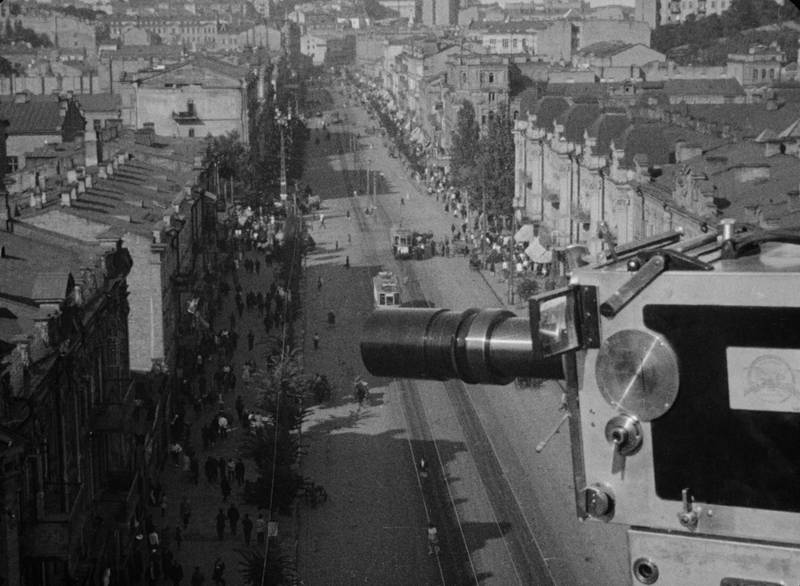
THE NEW MEDIUM I
Oct. 20, 2016 - Oct. 29, 2016
A chronological viewing of 14 films beginning with Vertovs Man with the Movie Camera, and concluding with Farockis Parallel I-IV; The New Medium presents innovations in Cinema.

A chronological viewing of 14 films beginning with Vertovs Man with the Movie Camera, and concluding with Farockis Parallel I-IV; The New Medium presents innovations in Cinema.
The New Medium was a curated programme for the Mumbai International Film Festival for three consecutive years (2016-2018). The inaugural program - in a twisted art-historical mode - framed cinema as a new medium (125 years old, when compared to the other arts), and scoured the century of cinema chronologically...
14 films and three live events that explode the relationship between Footage and Films into a galaxy of possibilities.
Curated by Shaina Anand
at MAMI
October 12 to October 18, 2017
A 2-day festival within the Mumbai Film Festival. Sixteen multi-screen films and video installations by pioneering filmmakers and artists, many of them Asian premieres, will be presented in the cinema hall. Curated by Shaina Anand.
Pad.ma invites you toRivers without Banks at CAMP27th December, 2013 through 27th January, 2014Before the start of a new year; and among big and small resolutions for the future we chose to ask ourselves what is free cinema today, what is its political and perceptual economy, and what could we summon of its powers, before embarking on new journeys of making and thinking. Rivers without Banks is a screening program of films whose durations extend beyond conventional length. But importantly, this is not a collection put together quantitatively, even as we may argue that the epic scales present in the chosen films carry the weight of histories, and put together chronologically show us a century where individual everyday lives face the annals of terrible power; where the human condition battles with nature and technology, with love and loss, with good and evil.
CAMP presents Saturday or Sunday evening screenings through winter,
exploring footage both within and outside the usual capsule of "the
film". An experience that could be similar to watching films, or at
other times harder to digest, or slower to release, closer to the moment of
shooting, less censorious, and less fearful of finitude. Another life,
another world of viewing and listening experiences is always possible.
Listings of the film screenings held every weekend on CAMP's roof during January and February, hosted by Pirate Cinema Berlin.
More to come next winter, when CAMP gets a brand new roof and makes a brand new cinema;)
with Kamal Swaroop and collaborators, a Journey through Phalke's world.
Live Event
The New Medium II: Footage Films.
17 Oct, PVR Icon 6:30 pm
With Ranjani Mazumdar, Shohini Ghosh, Charu Gargi and Shikha Jingan
Live Event
The New Medium II: Footage Films
14 Oct, PVR Icon audi 1, 12.00 pm
Meet the members of India's first, woman-only, documentary collective and revisit their history and prescient video practice.
A 200-year neighbourhood story told through a single camera mounted on a cinema hall, 90 minutes.
Opening event
The New Medium II: Footage Films
Friday 13th Oct 2017
5:30 pm to 7:00 pm
IMAX at PVR Phoenix
also
Monday 16th Oct 2017
5:30 pm to 7:00 pm
PVR Phoenix 6
Show and tell with Sanjay Bhangar.
Saturday, 24th January, 7 pm to 9 pm, at CAMP.
Saturday, 6 to 8 pm.
A conversation with scholar Irina Aristarkhova and theorist/ curator Gunalan Nadarajan about their recent projects.
Irina presents ideas from an upcoming co-authored book on cyberfeminism, Night Sweats: Cyberfeminist Practices, out this year.
Guna will speak about a recent exhibition series across South East Asia, the first of which is named Menggodam.
Country of the Sea as part of revolutionary remembrance / क्रांती स्मरण
CAMP took part in the 16th Gwangju Biennale Pre-Programme events.
International Seminar on Documentary Film
“A collective / inarticulate harmony.”
A video performance tour of the work in three-acts with Shaina and Ashok.
Choreographies of the Everyday and Tokyo Art Week
Metabolic Container
Starting from 400 boxes of goods, part of a weekly, diasporic "trade" (one-way) between Batam in Indonesia, and Singapore. In which the container and its boxes are not just a carrier, but a medium.